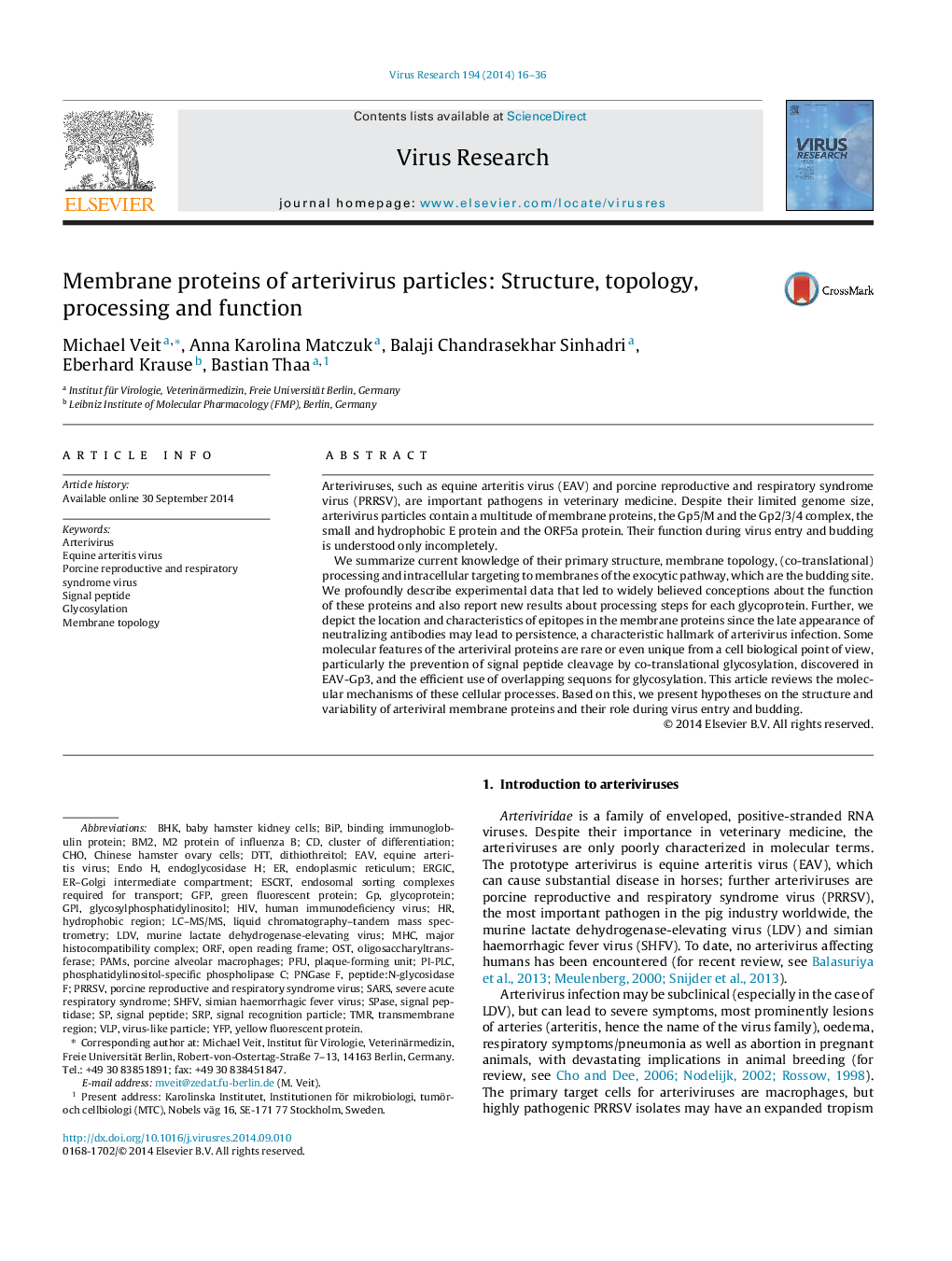| Article ID | Journal | Published Year | Pages | File Type |
|---|---|---|---|---|
| 6142292 | Virus Research | 2014 | 21 Pages |
â¢Arteriviruses are important pathogens in veterinary medicine.â¢We review the structure and processing of their membrane proteins.â¢Some features are unique from a cell biological point of view.â¢New data on this topic are also presented.â¢We speculate on the role of the membrane proteins during virus entry and budding.
Arteriviruses, such as equine arteritis virus (EAV) and porcine reproductive and respiratory syndrome virus (PRRSV), are important pathogens in veterinary medicine. Despite their limited genome size, arterivirus particles contain a multitude of membrane proteins, the Gp5/M and the Gp2/3/4 complex, the small and hydrophobic E protein and the ORF5a protein. Their function during virus entry and budding is understood only incompletely.We summarize current knowledge of their primary structure, membrane topology, (co-translational) processing and intracellular targeting to membranes of the exocytic pathway, which are the budding site. We profoundly describe experimental data that led to widely believed conceptions about the function of these proteins and also report new results about processing steps for each glycoprotein. Further, we depict the location and characteristics of epitopes in the membrane proteins since the late appearance of neutralizing antibodies may lead to persistence, a characteristic hallmark of arterivirus infection. Some molecular features of the arteriviral proteins are rare or even unique from a cell biological point of view, particularly the prevention of signal peptide cleavage by co-translational glycosylation, discovered in EAV-Gp3, and the efficient use of overlapping sequons for glycosylation. This article reviews the molecular mechanisms of these cellular processes. Based on this, we present hypotheses on the structure and variability of arteriviral membrane proteins and their role during virus entry and budding.
Graphical abstractDownload full-size image
